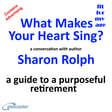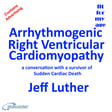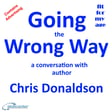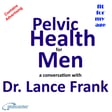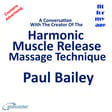
Running Technique - Learning How to Run Part 3 a conversation with Paul Harvey
Most people don’t start running in their fifties, but then Paul Harvey is not most people.
In the latest episode of the special series of Fit For My Age programmes: Learning how to RUN. Paul, who is the host of the Life, Passion, and Business podcast explains to host Michael Millward how he improved his running technique.
Paul went from sore knees on the running machine to running a marathon.
In an information packed episode Paul describes his running journey. How he noticed changes in his body. Buying the correct running shoes, which is very important for the older runner. Adopting the 80/20 running technique and learning how he measures his aerobic fitness using VO2 max.
Fit For My Age is made on Zencastr.
Zencastr is the all-in-one podcasting platform, on which you can create your podcast in one place and then distribute it to the major platforms like Spotify, Apple, and Google. It really does make creating content so easy.
If you would like to try podcasting using Zencastr visit zencastr.com/pricing and use our offer code ABECEDER.
Travel to Inverness, Scotland
Paul Harvey lives in Inverness, the capital of the Scottish Highlands. If you would like to visit the Highlands or elsewhere in Scotland, the best way to make your travel arrangements is with The Ultimate Travel Club, because The Ultimate Travel Club is where you will get trade prices on travel including flights, and hotels.
Visit the Ultimate Travel Club and use our offer code to receive a discount on your membership fee. ABEC79
Find out more about both Michael Millward and Paul Harvey at Abeceder.co.uk .
Matchmaker.fm
Thank you to the team at Matchmaker.fm the introduction to Paul.
If you are a podcaster looking for interesting guests or if like Paul, you have something very interesting to say Matchmaker.fm is where matches of great hosts and great guests are made. Use our offer code for a discount on membership. MILW10
Three the network
If you are listening to The Independent Minds on your smart phone, you may like to know that Three has the UK’s Fastest 5G Network with Unlimited Data, so listening on Three means you can wave goodbye to buffering.
Visit Three for more information about business and personal telecom solutions from Three. And the special offers available when you quote my referral code.
Being a Guest
If you would like to be a guest on Fit For My Age, please contact using the link at Abeceder.co.uk.
We recommend that potential guests take one of the podcasting guest training programmes available from Work Place Learning Centre.
We appreciate every like, download, and subscriber.
Thank you for listening.


